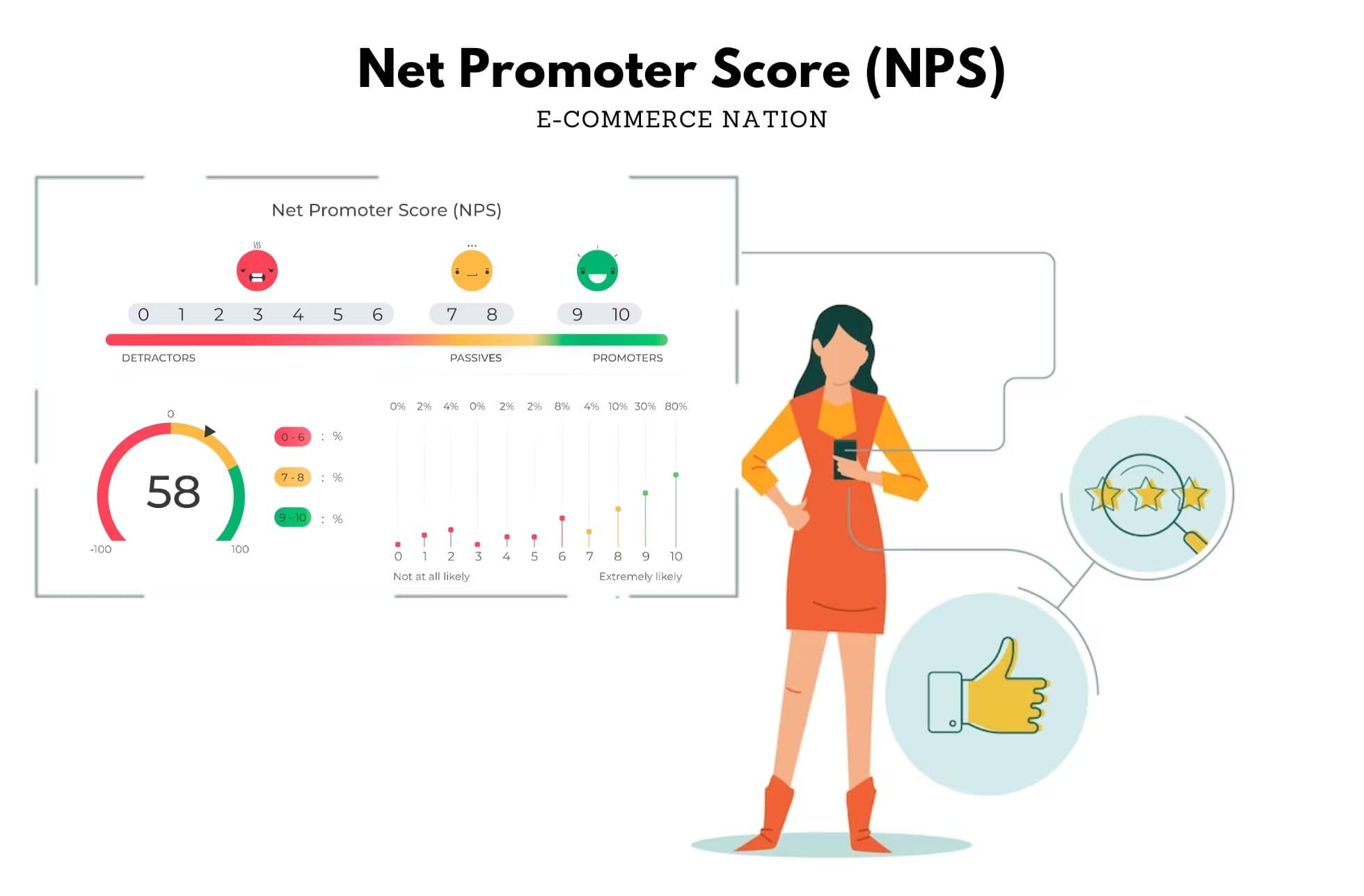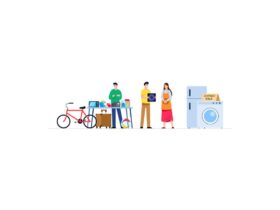Did you ever imagine that purchasing everything you need to throw a party wouldn’t require your physical presence? We all can recall how frantic the planning made us and how the delirious visits to malls and markets suck everything out of us, making us angry at ourselves for inviting stress voluntarily.
But, the scenario is not the same anymore. E-commerce has reached to such unimaginable heights from where we can get even the tiniest things at our door step including fresh vegetables and beer by ordering online. This shift has seen a tremendous growth in 2016 especially during the holidays when people purchased more than 3 billion dollars worth of products on just Black Friday.
For those who neglected to keep up with the e-commerce trends for this holiday season has definitely missed a chance to prove their online presence and to increase their revenue as well. However, you can always make up by following and preparing to deploy e-commerce strategies that are going to rule the world of online selling in 2017.
Let’s check what the e-tailers need to adopt to make it big on the internet in 2017:
1. Online presence will be a compulsion rather than a choice
The recent holiday sales have made the e-commerce scenario more promising than ever. E-commerce sales reached the par of $3.4 billion on this year’s Black Friday sales alone which has set the retailing section in motion to grasp the reality. According to researchers, e-commerce sales will reach $4,878 billion in 2021.
The increasing number of online shoppers has made online presence a necessity for smaller retailers. Big companies like Amazon, and eBay are undoubtedly great sources of making online sales via their powerful marketplaces, but not competent enough to target profits. 2017 is going to be the year when more and more of startups try to make an imprint on the web. It is going to be a tough competition for the e-tailers to build a new customer base as well as retain their old customers.
The online stores have already given chase for profits to the physical stores. 2017 is the crucial point where the percentage of online shopping may surpass that of physical stores. Thus, not having an online address will be a big setback for retailers and more than being an option, taking your store online will be a compulsion, especially for smaller retailers.
2. Mobile-friendliness is the focal point
Over 65% of the total traffic generated was from smartphones on Black Friday. It is no secret how mobile phones are changing the game of online selling and directing more than half of the online traffic. However, it is also noticed that in spite of being a larger traffic generator, mobiles have had a lower conversion rate than desktops.
According to the e-commerce study released by Wolfgang Digital, there is a correlation between increased mobile traffic and its low conversion rate, or rather desktop’s higher conversion rate in spite of mobile being a greater traffic generator. They said that the major searches for the apt-to-buy are conducted on phones.
People use mobile phones to make countless searches and look out for the best of the options available using their smart mobile devices. And, it seems logical too. You don’t have your desktop on your commute where you can easily use your smartphone to drill down the online stores.
Once the product, store, and range are finalized, the same user makes the purchase using their desktop, purely for its convenience. The sole reason for this being the scenario is incompetence of mobile sites. While many online retailers have made it a point to make their responsive sites much better than their adversaries, some are still far away from making a responsive site at all.
Bigger retailers who have embraced the need for responsive sites and clean applications have clearly won in holiday season sales. The dominance of mobile wallets has a great role to play in this shift. The online retailers who have yet to optimize their stores for mobile shopping: now is the time to go mobile.
3. Contextual Commerce will ace the race
Contextual commerce is where online selling meets Internet of Things or “IoT”. This amazing concept of a live-action data feed has set some serious goals to achieve for the online retailers. The e-tail giant, Amazon has embraced this technology and introduced Dash Button which is a WiFi connected device that reorders your favorite products simply with a press of the button. Each product has its own dash button programmed to notify the user’s requirement of that specific product.
Although the sales through this IoT product is gaining momentum at a slower pace, the crucial goal about it is data generation. Contextual shopping is likely to sort the shopping patterns of the online consumers which make marketing as well as targeting the set of customers personally. Following Amazon’s step ahead in e-commerce, the leading tech enthusiasts believe that 2017 might be the year for a slow but steady clasp on contextual commerce by retailers.
4. Chatbots as personal shopping assistants:

The retail industry has gone through some very different stages of development since the brick-and-mortar age. However, the major difference between the former and online shopping is that previously, we didn’t have the benefit of assistants that could help customers find their favorite products within seconds. Well, this had to evolve and it has with the integration of chatbots in online retail stores.
Chatbots have literally exploded in 2016 with technical giants such as Facebook and Microsoft’s investment in this technology. “2017 will be the year where you can expect more online retailers to leverage chatbots on Facebook’s Messenger Platform,” says Smith. Bots will ease the task of finding a perfect product online without actually surfing the internet like crazy. They will be your personal assistants assisting you in finding your preferences whether they are for shopping or booking a hotel. More online retailers are expected to instill this technology or use Facebook’s Messenger Platform to engage with users.
Live support through these bots is bound to enhance the customers’ shopping experience by ten-fold. According to a report generated by Econsultancy, 83% of customers are willing to have live support for shopping and checking out at an online store. There are already numerous chat apps assisting Shopify stores in converting visitors into customers. Every e-retailer will have to follow this trend to survive in the long-term.
5. Same-Day Delivery
When we want something, it can be impossible to wait to get the hold of that thing, which usually is the case with online shopping. 29% of the consumers would be willing to pay extra for same-day delivery, states a Forrester Report. Delivery time is one of the most important factors that directs consumers’ searching pattern. This makes the “same day delivery” feature the standard expected from the e-commerce market.
With Amazon Prime and other shopping giants’ premium subscription facilities available, it has become imperative to speed things up before you become an option to such stores. While the online stores are trying their best to keep up with the trends set by Amazon, initiatives like UberRush and Postmates are making money off e-commerce by providing faster delivery options. Hence, 2017 may prove to be an ultimatum for the long awaited “same day delivery” trend to be picked up.
6. Big Data and automated, personalized marketing
Big data is a big thing now, and which hardly needs any introduction. What’s new is the big data analysis and data-driven marketing that has put traditional marketing on the back-burner. The decision-making process is overly simplified and quicker with the real-time analysis promoted by the integration of big data analytics. As stated by iMorphosis, the E-tailers who have adopted big data analysis have observed almost 60% growth in business margin and a substantial enhancement in labor productivity.
Big data allows E-tailers to conduct the predictive and prescriptive analysis which helps determine customer’s online behavior. This information can be used to automate your email marketing campaigns for the existing customers and mail them their much favorite products with personalized mails and offers.
However, personalization marketing is much more than a customer’s name in the e-mail. Automated marketing will allow you to send mail that is fashioned on your customer’s search history, shopping history, clicked on products during an active session on your site, and other such real-time data.
Online sellers will be able to know every single thing that attracts each of their customers and design marketing campaigns accordingly in 2017. This has already caught a fire in 2016 but is expected to be a widespread trend in 2017.
7. Social Commerce
Social media platforms have played a huge role in E-commerce industry in 2016. Facebook, Instagram, Pinterest, Youtube, Snapchat, and Twitter has introduced a unique method to engage the customers. Pinterest’s recent update that allows a user to buy the pinned product from its seller has made e-commerce much easier and fun. Instagram’s feature that lets the users tag the brands has given a great boost to the marketing as well as the selling aspect.
Fashion bloggers, technological enthusiasts and online reviewer’s link up with brands to endorse, which has also contributed to making social media platforms a great source of customers. Customers also take to social media when they are extremely content with the services of the online store or the product. Reviews, comments, recommendations, and referrals on social media make a great impact, be it positive or negative on the sales.
Fashion startups have been observed making a social media presence before they make one on the web. These sellers study the customer’s demand and understand their own standards without spending in creating an online presence, which is indeed smart of them. 2016 was exploded with such startups and it is going to continue in 2017 with much more enthusiasm.
8. Border-free e-commerce
According to the recent study on global shopping conducted by Pitney Bowes, 66% of global customers have participated in overseas e-commerce. Today, the consumers don’t hesitate to purchase products from other countries especially is it is not available in their own country. Being an online seller, you may have to consider global customer engagement on your store in 2017. With only a barrier of currency which is already nullified by payment gateways such as PayPal, cross-border e-commerce is only going to boom in the coming years.
9. More advanced payment options
Payment options matter a lot when a consumer chooses to buy online. The days are long gone when people chose COD as their payment option because of the mere fact of having to stay present when the product is to be delivered. However, it is preferred by a few people which does not let sellers remove it from as an option.
Credit cards, debit cards, and internet banking have been the prime payment options since the dawning years of E-commerce. With the availability of numerous payment options, options like V.me by Visa, MasterPass by MasterCard, ApplePay, Google Wallet, and Paypal have been almost a compulsion for e-commerce owners to add as optional payment gateways. However, what changed in 2016 is the increase in introduction of personal wallets of different stores.
Many local E-tailers offer to cash back a certain amount to the customers on using their brand’s wallet which can be used for their next purchase. This has affected the sales pattern as people tend to return to that site to use their cash back amount, thus increasing the sale of that store. This is expected to increase in 2017 along with complete integration of major banks’ wallets and other alternative payment options.
10. Refunds, Returns, and Referrals
Amazon has an amazing return and refund policy which has urged other online retailers to improve theirs. With a benchmark as of Amazon’s it will be extremely important for online retailers to design similar return and refund rules if they want to retain their customers.
Referrals is another major aspect that drives online sales. According to a survey conducted by Bright Local, 84% of people trust online recommendations and 90% of people read almost 10 reviews before making a purchase. They also stated that 74% of consumers believe that positive reviews encourage them to trust that store.
The fact that 73% of consumers think that reviews older than 3 months are irrelevant has made referrals and reviews a big part of the business. Along with a strong social media presence, your online store must also have a strong online recommendation value in 2017 to make it big online.Your financial year has begun and it won’t turn out to be as expected if you don’t consider following the above e-commerce trends. Every online retailer may have to think about these trends sooner or later in this year to drive their business when they aren’t willing to leave their profits to fate.
Which e-commerce trends do you think are the biggest for this year? Tell us below or tweet us!






